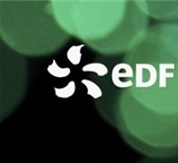Computational assessment of LOCA simulation tests on high burnup fuel rods in Halden And Studsvik using Cyrano3 code
Résumé
CYRANO3 is the thermal mechanical industrial code developed and used by EDF to simulate in-pile nuclear fuel rod performance under normal and transient conditions (power ramp tests) within Pressure Water Reactors (PWR) and during transport and storage periods as well. This code has already been successfully used by EDF for the last thirty years to justify normal operations and category 2 transients, covering various types of fuels: UO2, UO2 + gadolinium, MOX and various claddings as well proposed by the nuclear fuel suppliers: Zircaloy-4, Zirlo™, Optimized Zirlo™. The CYRANO3 code was recently extended from normal and incident operating sequences to accidental scenarios. In this paper, a global overview of CYRANO3 ability to simulate thermal mechanical behavior of fuel rods under loss-of-coolant accident (LOCA) conditions is presented with a focus on recent developments carried out to assess fuel rod behavior under these conditions. CYRANO3 is demonstrated to be a powerful tool to provide reliable values of fission gas release, fuel fragmentation / relocation and cladding strains under LOCA conditions. As part of validation of these development works, computer calculations have been used to assess two LOCA simulation experiments (for example computed fuel fragment sizes and axial relocation zones are compared to the related measures), carried out in an experimental core in Halden, Norway (IFA-650.15 test), and in Studsvik laboratory hot cells, Sweden (Counter-part test). The experiments were done on short test rodlets that had been sampled from high burnup fuel rods after unloading from commercial light water reactors. The main objectives of the work are to expand knowledge of the thermal mechanical behavior of high burnup fuel under LOCA by making interpretations of test simulations and to validate newly developed computational models for high burnup fuel fragmentation and axial relocation that have been implemented in an extended version of the CYRANO3 fuel code. The father rod (36U-N05) chosen for the counterpart LOCA tests in Halden and Studsvik has been characterized by fuel performance modelling. The steady-state irradiation power history was input and modelling was performed. For the IFA-650.15 and the Counterpart test, key results of the experiments, such as cladding tube temperatures and power history, are reproduced with fair accuracy by means of the computer simulations. Results demonstrate the good ability of CYRANO3 to simulate these tests. The times and conditions of failure and ballooning are in particular well predicted. Calculated clad diameters when failure is detected are in good agreement with experimental measurements. Nevertheless, the modelling of fuel fragmentation and axial relocation needs to be improved.
Origine : Fichiers produits par l'(les) auteur(s)

